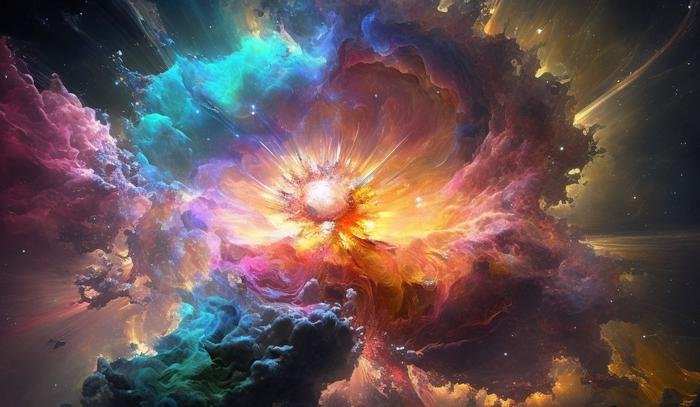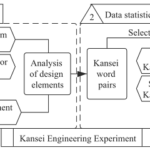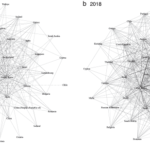
What drives us to develop new ideas instead of settling for standard methods and processes? What triggers the desire to innovate, even at the risk of sacrificing time, energy, and reputation for a potential failure?
While previous studies have demonstrated the positive influence of motivation on creative abilities, it remains unclear how reward and subjective values play a role in creativity.
Creativity is based on complex mechanisms that we are just beginning to understand, and motivation plays a central role in them. However, pursuing a goal alone is not enough to explain why we prefer some ideas over others and whether that choice benefits the success of our actions.
In this regard, researchers from the Paris Brain Institute–Institut du Cerveau and the University of Bonn developed a computational model with the goals of:
- Determining if subjective valuation occurs during idea generation (creativity task) and defining a valuation module based on behavioral measures during decision-making tasks;
- Developing the explorer and selector modules and characterizing which module(s) rely on subjective valuation (explorer and/or selector);
- Simulating surrogate data from the complete model composed of the three modules and comparing them to human behavior; and
- Evaluating the relevance of model parameters for creative abilities.
Cognitive Mechanisms for Idea Generation
“Creativity can be defined as the ability to produce original and relevant ideas in a given context, to solve a problem, or to improve a situation. It’s a key skill for adapting to or instigating change,” explains Alizée Lopez-Persem, a researcher in cognitive neuroscience at the Paris Brain Institute–Institut du Cerveau. “Our team is interested in the cognitive mechanisms that allow creative ideas to emerge, with the hope of learning to use them wisely.”
Currently, researchers agree that the creative process consists of two successive phases: generating new ideas and evaluating their potential. However, they still need to learn how this evaluation takes place and what leads us to retain certain ideas over others.
“We need to evaluate our ideas to select the best ones,” says López-Persem. “However, there is no indication that this operation corresponds to a rational and objective evaluation where we try to inhibit our cognitive biases to make the best possible decision. Therefore, we wanted to know how this value is assigned and if it depends on individual characteristics.”
Objectifying the Inner Movement of Idea Flourishing
Modeling the creative process as a sequence of operations involving different brain networks does not align with a popular conception of creativity, which is often depicted as an impulse that captures, transports, and overwhelms us.
On the contrary, Emmanuelle Volle’s team believes that creativity has three fundamental dimensions that can be modeled using mathematical tools: exploration, which is based on personal knowledge and allows us to imagine possible options; evaluation, which involves measuring the qualities of an idea; and selection, which enables us to choose the concept that will be verbalized.
To understand the reciprocal relationships between these three dimensions, researchers reproduced them in a computational model, which they compared to the actual behavior of individuals recruited for the study.
Through the PRISME platform of the Paris Brain Institute, 71 participants were invited to perform tests of free association, where they were asked to connect words in the boldest way possible. They were then asked to rate how much they liked these idea associations and whether they found them relevant and original.
“Our results indicate that the subjective evaluation of ideas plays an important role in creativity,” says Emmanuelle Volle, a neurologist. “We observed a relationship between the speed of producing new ideas and the level of appreciation of these ideas by the participants.”
“In other words, the more you like the idea you’re about to formulate, the faster it will come to you. Imagine, for example, a chef who wants to make a sauce: the more the combination of flavors entices him in his mind, the faster he will do it. Dive into the ingredients! Our other discovery is that this evaluation combines two subjective criteria: originality and relevance.”
Which Individual Preferences Promote Creativity?
The team shows that the importance of these two criteria varies among individuals.
“It all depends on their experience, personality, and likely their environment,” adds the researcher. “Some prioritize the originality of an idea over its relevance; for others, it’s the opposite. However, preferring originality or relevance plays a role in creative thinking: we have shown that people inclined toward original ideas suggest more inventive concepts.”
Finally, the team’s model predicted the speed and quality of participants’ creative proposals based on their preferences measured in an independent task. These results highlight the mechanistic nature of creative drive.
They also point to the possibility, in the long term, of precisely describing the neurocomputational mechanisms of creativity and correlating them with their neural substrate… challenging the stereotype that creative thinking is a mysterious process over which we have no control at any point.
Conclusion
The study’s results reveal the role of individual preferences and decision-making in creativity by dissecting and characterizing the exploration and evaluation/selection processes of idea generation.
“Our computational model correctly predicts the speed and quality of human creative responses, as well as inter-individual differences in creative abilities. Overall, this model introduces the mechanistic role of valuation in creativity. It paves the way for a neurocomputational explanation of creative mechanisms,” concludes the study.
“In the future, we want to define different creativity profiles related to people’s fields of activity. Do you have different creative preferences if you are an architect, software engineer, illustrator, or technician?” adds Alizée Lopez-Persem. “Which environments foster creativity, and which inhibit it? Can we modify or re-educate our creative profile through cognitive exercises to adapt to personal ambitions or needs? All these questions remain open, but we are determined to answer them.”
Reference (open access)
Lopez-Persem, A., Moreno-Rodriguez, S., Ovando-Tellez, M., Bieth, T., Guiet, S., Brochard, J., & Volle, E. (2023). How subjective idea valuation energizes and guides creative idea generation. American Psychologist. Advance online publication. https://doi.org/10.1037/amp0001165





